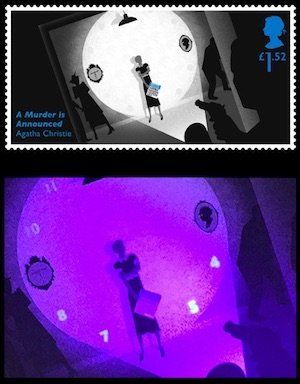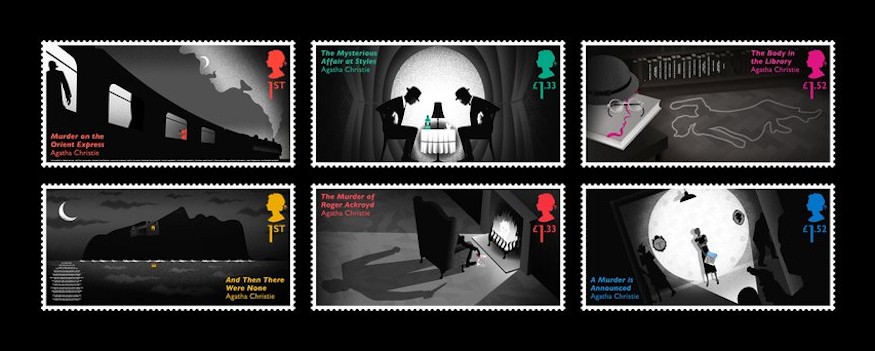 What do you use if you’re a crime fiction lover living in the UK and you need to post a letter? Well, an Agatha Christie stamp might solve that particular mystery. Last year, the Royal Mail brought out six stamps to commemorate the centenary of her first crime novel – The Mysterious Affair at Styles – and the 40th anniversary of her death. Designed by Studio Sutherl&, with illustration by Neil Webb, the stamps recently won a Yellow Pencil at the D&AD Awards.
What do you use if you’re a crime fiction lover living in the UK and you need to post a letter? Well, an Agatha Christie stamp might solve that particular mystery. Last year, the Royal Mail brought out six stamps to commemorate the centenary of her first crime novel – The Mysterious Affair at Styles – and the 40th anniversary of her death. Designed by Studio Sutherl&, with illustration by Neil Webb, the stamps recently won a Yellow Pencil at the D&AD Awards.
These aren’t just any stamps, and perhaps that’s why they’ve been awarded one of the British design industry’s most prestigious awards. There are clues throughout. Some are visual, concealed within the illustrations. The designers employed heat sensitive inks too, which means if you touch some of them further evidence comes to light. In other cases, if you hold a magnifying glass up to them you can read the micro type. Six stories are celebrated, including Murder on the Orient Express, And Then There Were None, The Mysterious Affair at Styles, The Murder of Roger Ackroyd, A Murder is Announced and The Body in the Library.
“The key was only using print techniques that helped tell the stories – not just using a special ink for the sake of it,” says Jim Sutherland, founder of Studio Sutherl&. “We had to be careful not give things away, no spoilers, and were careful not to show guns, knives, axes, nooses or blood and guts. Agatha Christie’s violence always seems polite even if gruesome. It’s a question of keeping in as much beautiful detail, while making them work on such a small canvas. It’s just so important to keep looking at them actual size. It is so satisfying to be able to tell a visual story in such a tiny space.”
Illustrator Neil Webb adds: “I don’t think up until working on the stamps I realised how dark some of her writing is. I like the juxtaposition of the genteel and the brutal and the novels really evoke a time and place which is very useful for an illustrator. I’m particularly drawn to early 20th century design, so that world was easy to find visual inspiration for.”
You can purchase the stamps here. Let’s have a look at some of those details…
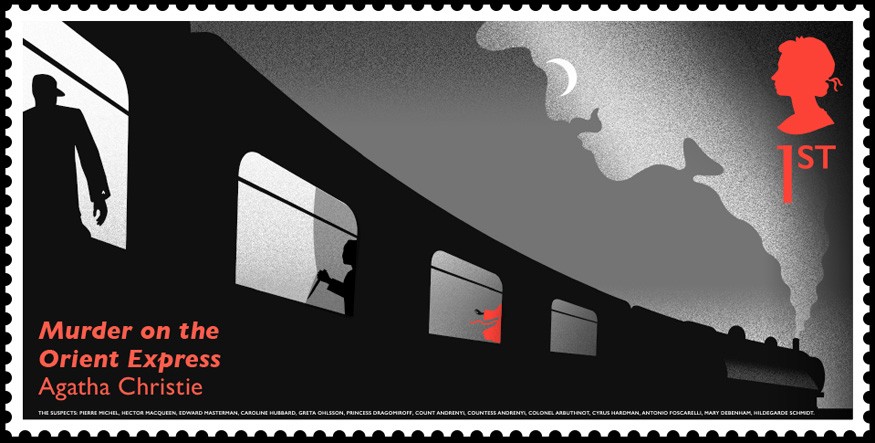
Look at the form taken by the steam above the train, and that red kimono there represents red herrings in the plot. This image shows you what’s revealed by the thermoreactive ink if you touch the stamp, and so you can see the killer in the second window. Tiny type along the train track lists the suspects as well.
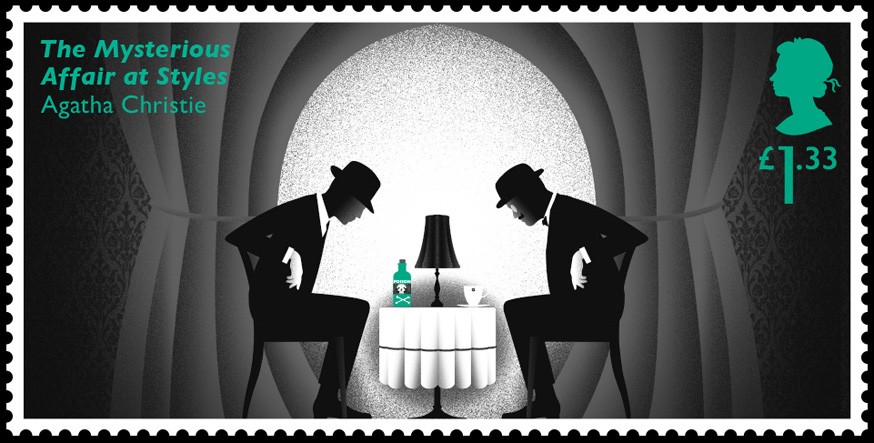
This one’s a beauty. Poirot and Hastings examine the clues, and thanks to the composition, and the use of clever pleating on the tablecloth, the overall tableaux resembles a skull. The entire stamp is replicated in miniature on the poison bottle as well. A clue within a clue, you could say.
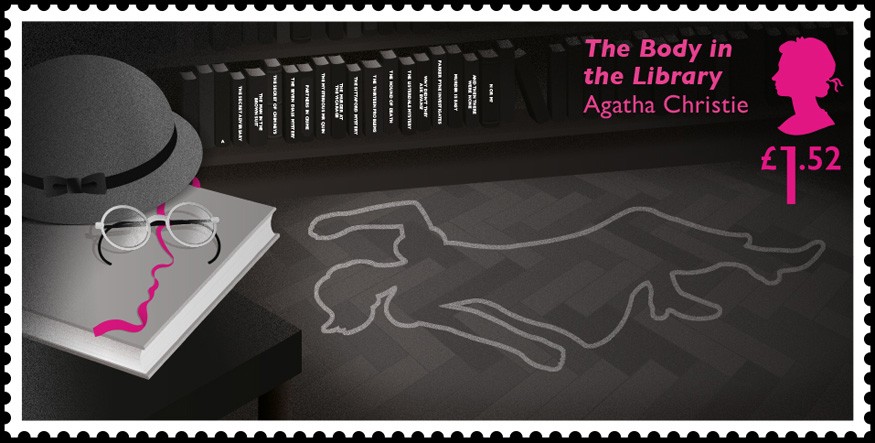
Here you might spot Miss Marple’s profile configured in the silk bookmark strip. Using a magnifying glass you’ll discover that the books on the shelf are the Miss Marple titles in chronological order, and more clues are revealed if you touch the stamp thanks to the heat sensitive ink.
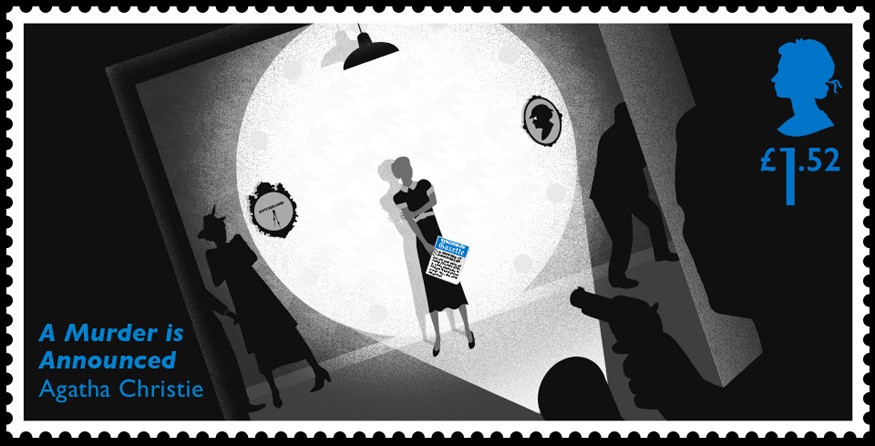
Touching this stamp reveals the torch/flashlight beam to be a clock face, and the plot revolves around a specific time when the murderer will burst in and kill the hostess. The figure holding the newspaper is also a clue, and she’s holding the North Benham News & Chipping Leghorn Gazette, which figures in the story as well.
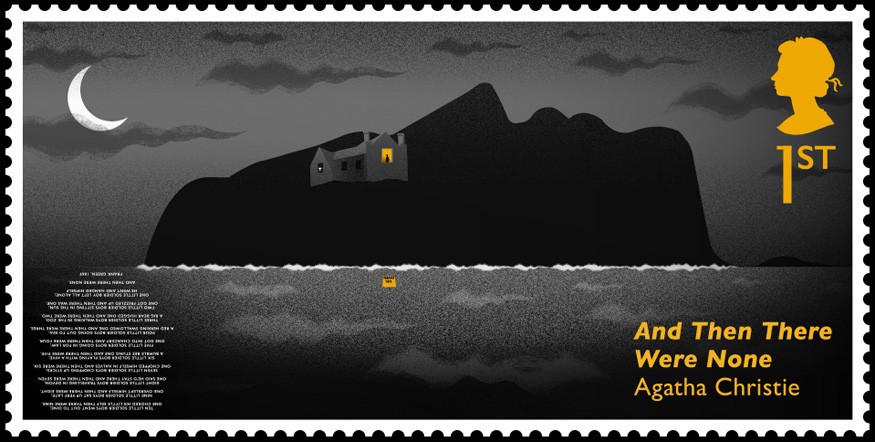
The island is the profile of the unknown killer and host, but also notice how the waves and the clouds form the same patterns. The poem, key to the plot, is the moon’s reflection. A mysterious figure appears at the lit window, but what does the window’s reflection say?
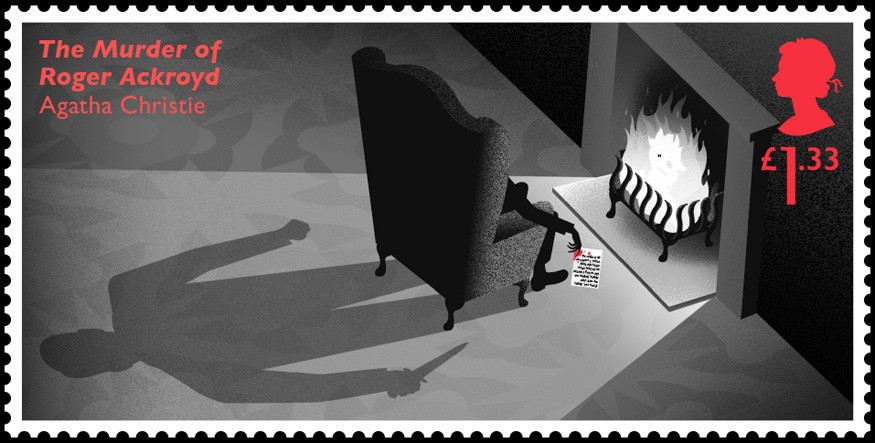
Here the chair’s shadow form’s the killer’s silhouette, and the person in the chair is holding a suicide note, which you can read with a magnifying glass. Is there a figure in the flames, looking on?





